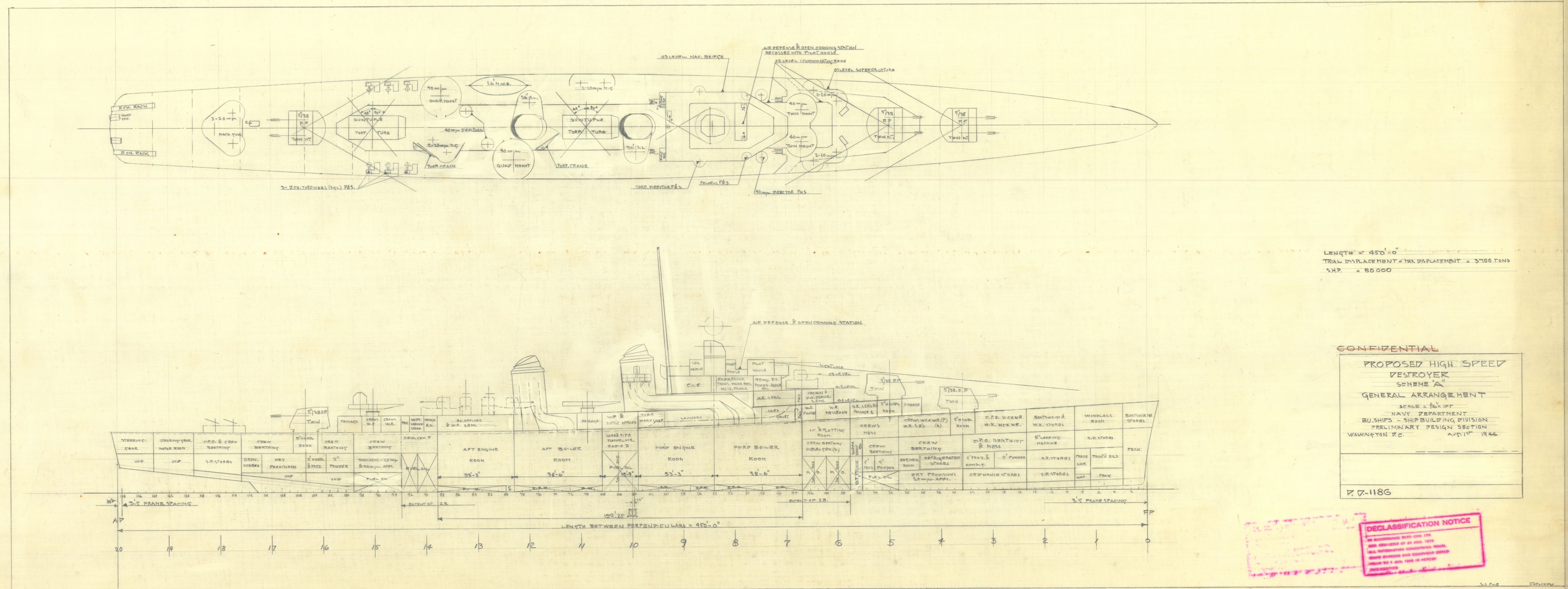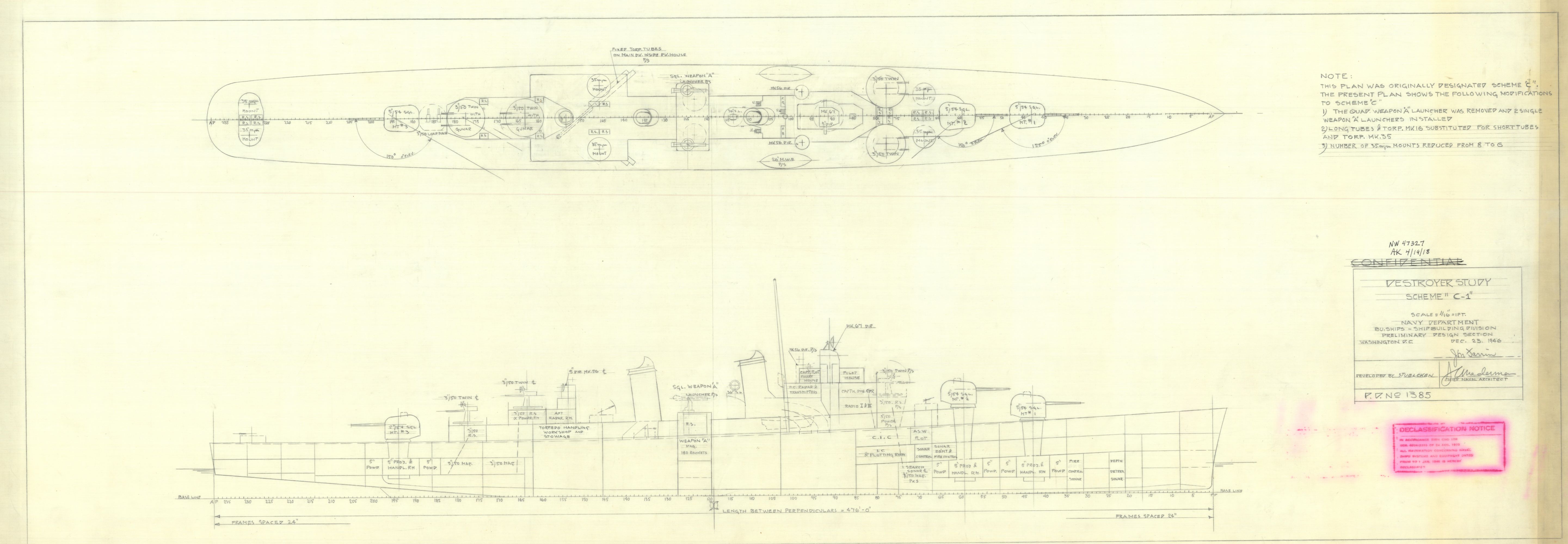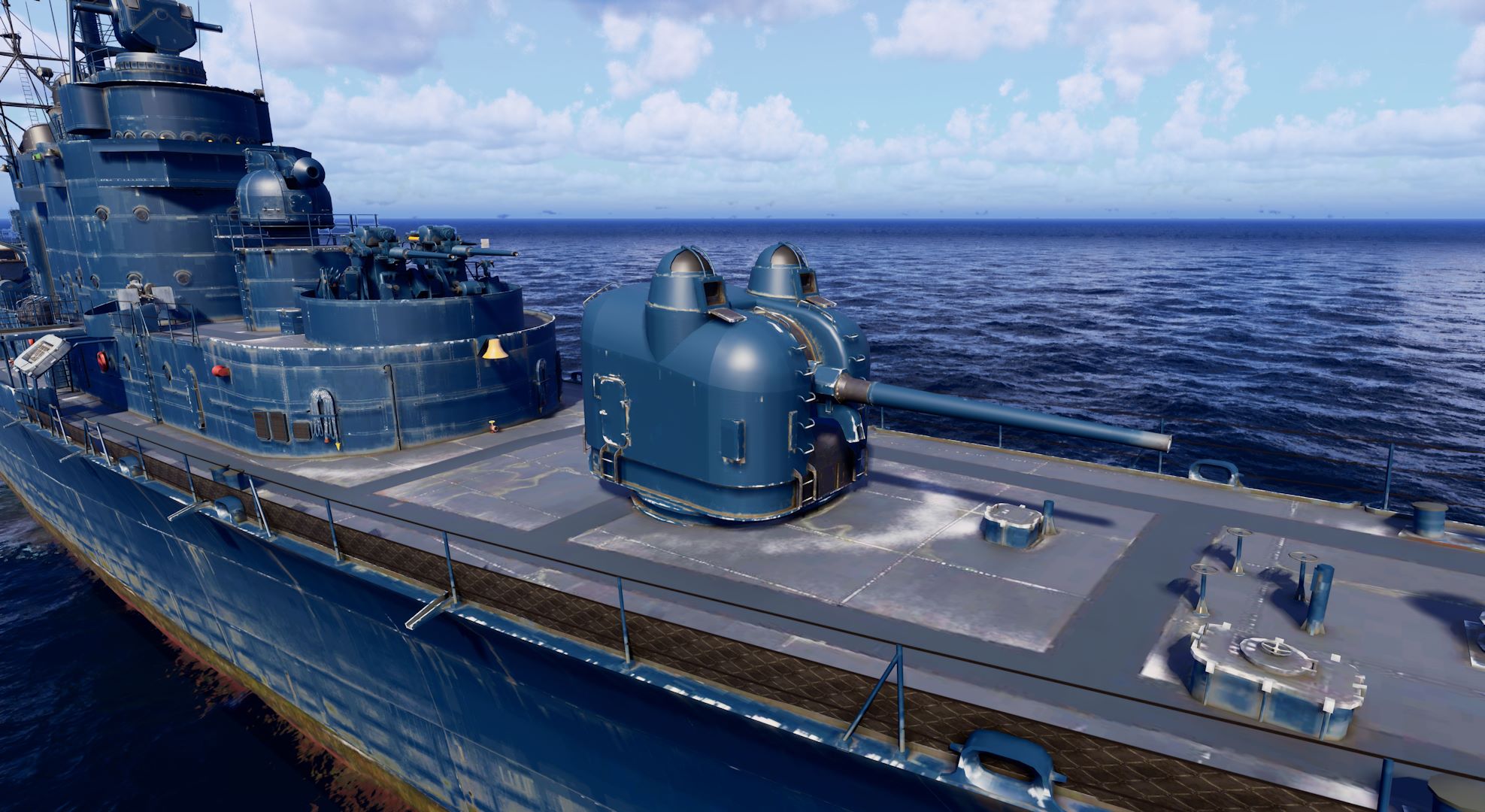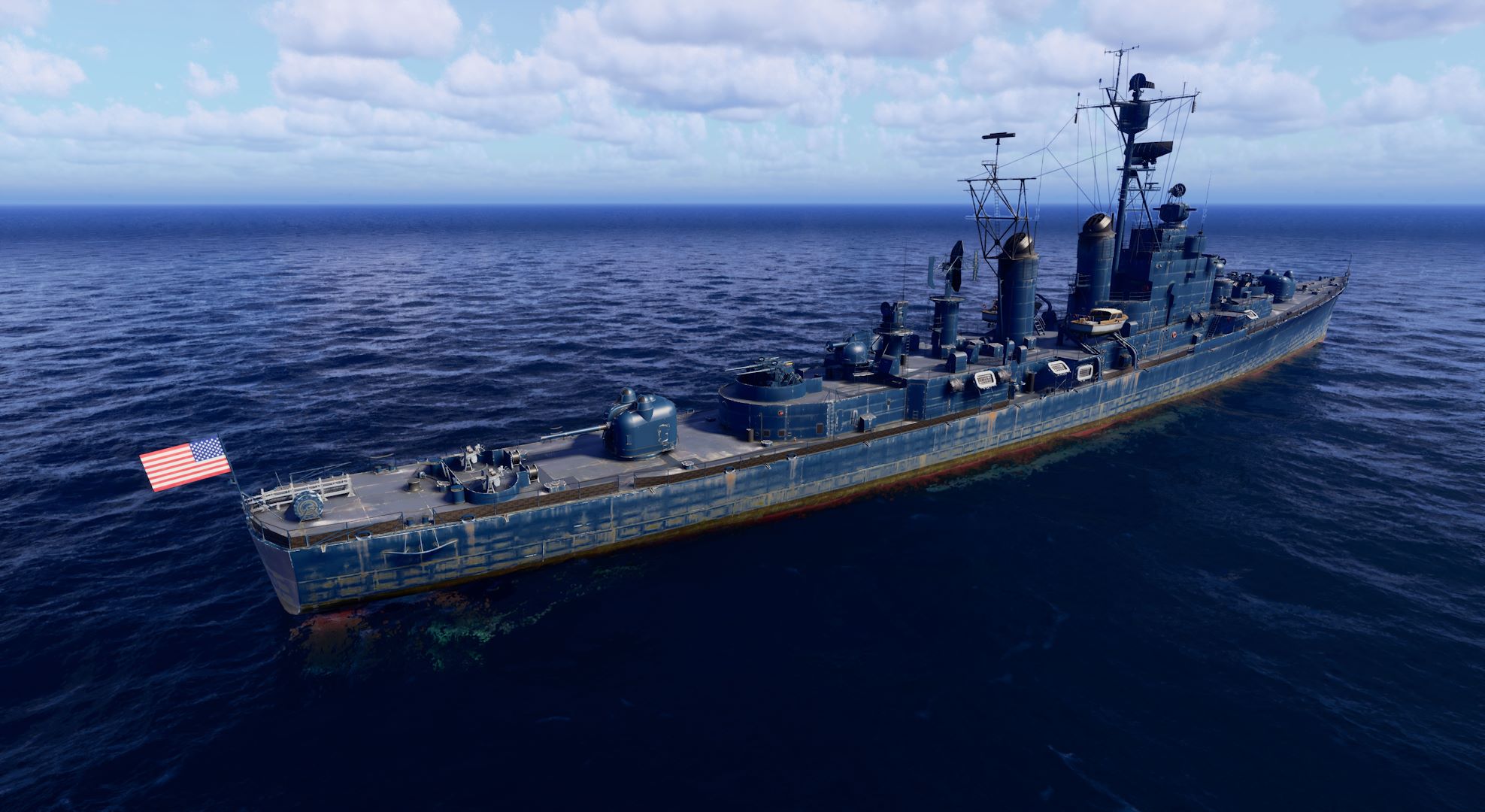From the spring of 1942, the General Board of the US Navy brought up a new fleet destroyer design for consideration. The design was expected to improve on the existing 2,200-ton Sumner class by raising the top speed from 36.5 to 38 knots with a moderate increase of 300 tons in displacement. This began a series of design studies that evaluated the potential characteristics of an improved Sumner/Gearing class. By the end of 1948, the design was drastically different from the destroyer envisioned 6 years before and formed the basis for the Mitscher class destroyer leaders.
Dimensions: 149.4 m overall length; 14.5 m beam; 4.5 m draft
Machinery: 2x shaft geared turbines; 4x Foster Wheeler boilers; 80,000 shp @ 36.5 knots; range 4500 nm @ 20 knots
Armament: 2x 5-in/54 (2x1); 4x 3-in/50 (2x2); 8x 20 mm (4x2); 4x 21-in Torpedo Tubes; 2x Weapon Alfa ASW; 1x Depth Charge Track
Sensors: Radar SPS-6; SPS-8; Sonar QHB; SQG-1
The Fletcher class destroyers were in service by 1942, and it became clear that their speed would drop far below 36 knots under the new trial load requirements. A new design was necessary if the board wanted destroyers to maintain a top speed of 36 knots or higher while carrying standard loads. The increase in speed was considered desirable by some as a quicker way to deliver an offensive torpedo attack, justified by the close range nature of naval battles around Guadalcanal. However, the recent shift towards an aircraft carrier centered task force in the Pacific meant that the role of a destroyer would be primarily for screening and not as an offensive torpedo delivery system. A possible upgrade in surface firepower was also considered through the use of the 5-in/54 over the existing 5-in/38 gun. It is important to note that the 5-in/54 gun at this time of consideration was the Mk 16 intended for the Montana class battleships in dual mounts and not the automatic Mk 18 gun that would be present in the final design.

In 1944, a similar design was drawn up with the same objective of higher speed. A longer hull and improvements to the existing propulsion system could bring the speed up to 37 knots. A top speed above 37 knots required a new propulsion system and a much larger hull for accommodation. This increased the displacement to a minimum of 3,500-tons, a drastic jump from the 2,500-ton estimate in 1942. At this point, the design characteristics were becoming increasingly similar to the large French destroyers of the Le Fantasque class constructed in the 1930’s, which achieved beyond 37 knots during standardization trials. Ships with such characteristics demonstrated that high speeds combined with effective armament and cruising radius were indeed possible, in spite of their older propulsion systems.
Wartime experience demonstrated the deadly potential of the aircraft carrier and the submarine. In the postwar era, the threat of air and underwater attacks required significant anti-aircraft and anti-submarine capability. The new destroyers should be optimized for either of these roles as screeners and escorts for their task force. In terms of anti-aircraft armament, new 3-in/50 mounts would replace the existing 40 mm Bofors guns. Increasing the hull size at the cost of maneuverability was now considered favourable; the need to close distance quickly in order to deliver torpedoes and depth charges was no longer necessary, while characteristics such as speed, seakeeping and endurance would significantly improve from the larger hull. Furthermore, the homing torpedo and anti-submarine rocket allowed the engagement of underwater targets at much longer ranges compared to traditional depth charges. The design was also further modified to use the automatic 5-in/54 Mk 18 guns in single mounts instead of the originally planned semi-automatic 5-in/54 dual mounts.

USS Mitscher was laid down in October of 1949 as a completely different ship than the fast fleet destroyer envisioned in 1942. When all four ships were launched in 1952, the Mitscher class became the largest destroyers in the world, outsizing even some light cruisers in other countries. The compact machinery allowed the ship to reach speeds of up to 36 knots, although it proved later on to be the source of major engine problems. Originally, the design called for the installation of 3-in/70 guns; however, the mounts were not yet available at the time of construction and the ships were completed with 3-in/50 guns instead. The 3-in/70 mounts would later be installed in 1957. Unfortunately, the new Mitscher class destroyer leaders were considered too expensive for mass production and consequently failed to fulfill the role of a postwar destroyer in adequate numbers. A mass production version of the postwar destroyer was needed and eventually became the design basis for the Forrest Sherman class.


Sources
Blackman, R. V. B. Jane’s Fighting Ships 1953-54. Sampson Low, 1952.
Friedman, Norman. U.S. Destroyers: An Illustrated Design History. Naval Institute Press, 1982.
Gardiner, Robert. Conway’s All the World’s Fighting Ships, 1947-1982, Part 1: The Western Powers. Conway Maritime Press, 1983.